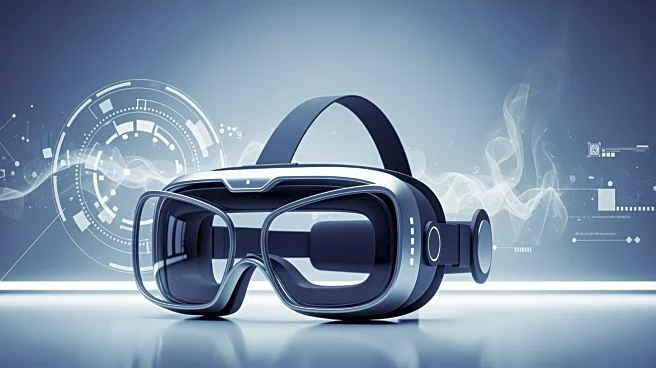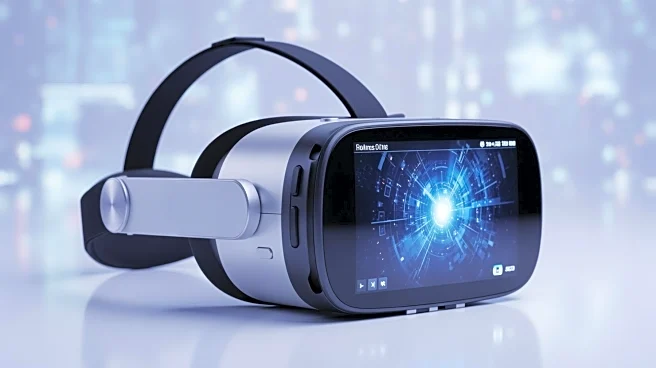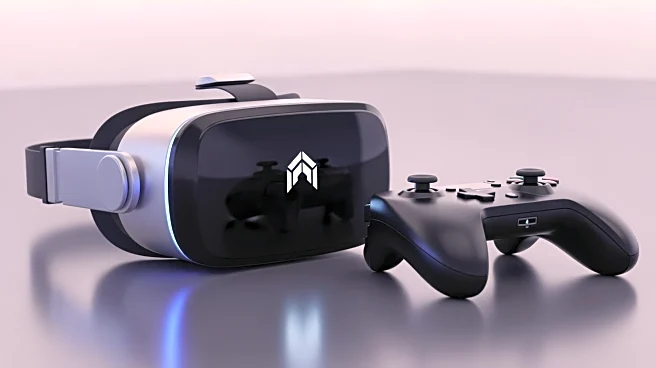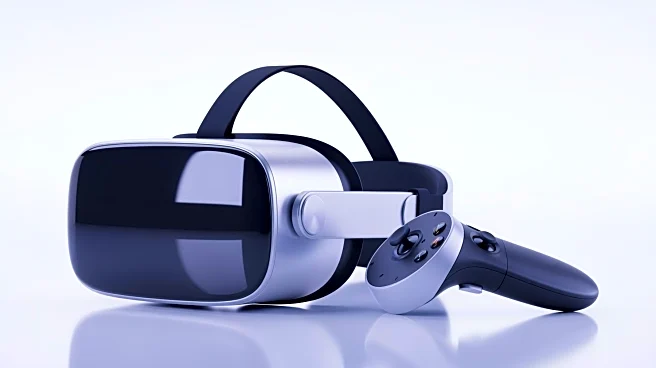What's Happening?
Valve has unveiled its latest VR headset, the Steam Frame, which incorporates a technology known as foveated streaming. This innovation aims to optimize the wireless connection by focusing high-quality
data transmission on the area where the user is looking, using eye-tracking technology. The Steam Frame connects to a PC via a dedicated 6 GHz wireless adapter, allowing for high bandwidth usage. It features two 2160 x 2160 screens capable of running at 144 Hz, which demands significant data transmission. To manage this, Valve sends high-resolution images to the user's focal point while reducing data sent to peripheral areas. This approach enhances the visual experience without compromising performance, even as the user shifts their gaze.
Why It's Important?
The introduction of foveated streaming in the Steam Frame represents a significant advancement in VR technology, potentially setting a new standard for wireless VR experiences. By optimizing data transmission based on eye movement, Valve enhances the visual fidelity and responsiveness of VR gaming, which could attract more users to the platform. This technology reduces latency and increases bandwidth efficiency, making high-quality VR experiences more accessible. It also eliminates the need for developers to modify their games to support this feature, streamlining the integration process and potentially accelerating the adoption of VR technology in gaming.
What's Next?
Valve's focus on wireless VR technology suggests a shift towards more immersive and untethered gaming experiences. As the Steam Frame gains traction, other VR manufacturers may adopt similar technologies, leading to broader industry changes. The success of foveated streaming could influence future VR headset designs, prioritizing wireless capabilities and eye-tracking features. Additionally, Valve's approach may encourage developers to explore new possibilities in VR game design, leveraging the enhanced capabilities of the Steam Frame.
Beyond the Headlines
Foveated streaming not only improves the technical aspects of VR gaming but also raises questions about privacy and data usage. The eye-tracking technology required for this feature involves collecting detailed information about user behavior, which could have implications for data security and user privacy. As VR technology evolves, ethical considerations regarding data collection and user consent will become increasingly important.











